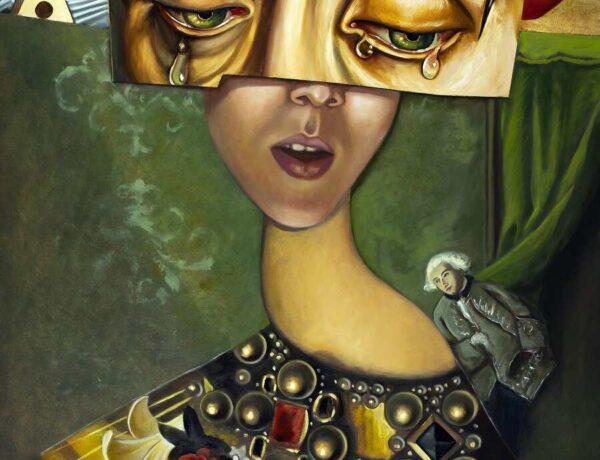Due to a misprint in Issue 43, we would like to share Emil Melmoth’s interview by Beautiful Bizarre art magazine writer Addison Devereux, ensuring proper credit is given for her work.
If you’re asking yourself, “what sort of person comes up with this horrifying stuff?”, the answer is: someone willing to bring the viewer to the edge of what is socially acceptable and then kick them over the side. Dear viewer, you have now arrived in the place where horror and beauty collide. Pablo Picasso’s quote “everything you can imagine is real” seems to be perfectly in tune with the way children conjure the wildest creations from their active imagination. Whether it’s through chalk art or clay, Lego or fingerpaints, creativity appears to flow easily at a young age and the artist Emil Melmoth is no exception.
Emil began using his hands to create tangible representations of his imagination using both Lego and clay. His initial focus was shape as he engrossed himself in the discovery of those material mediums. As a teenager, his shapes turne into video game and comic book characters. Finding himself immersed in his inventiveness, the Mexican artist dedicated himself to his studies at La Esmerelda, the National School of Painting, Sculpture and Engraving in Mexico City.
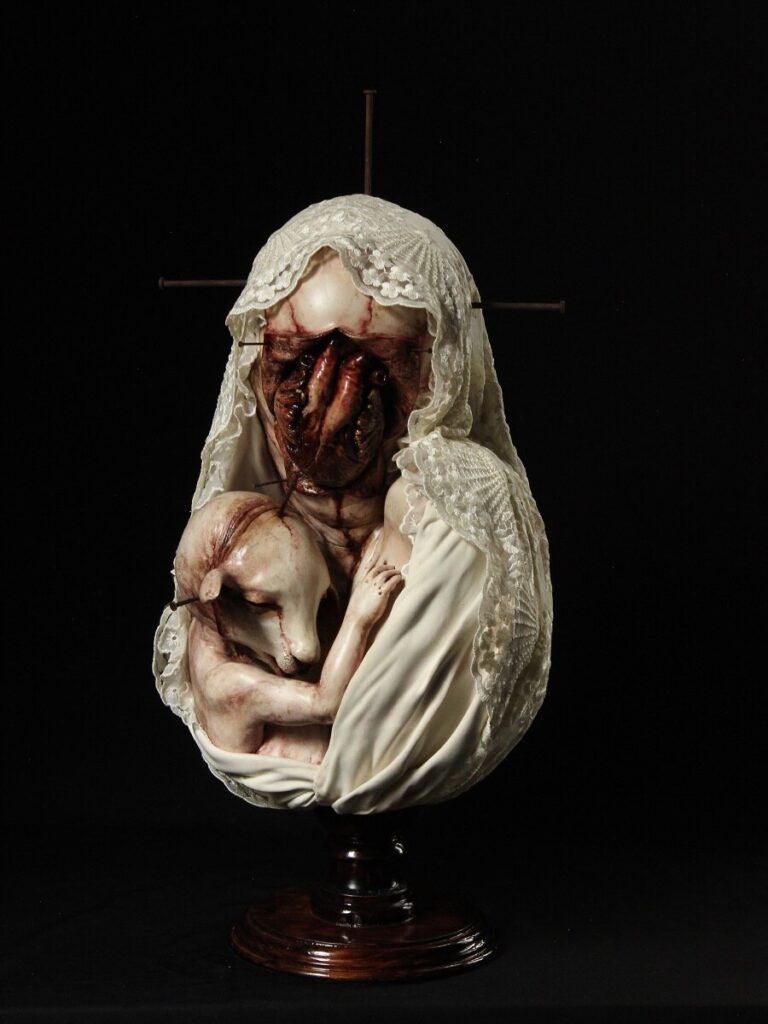
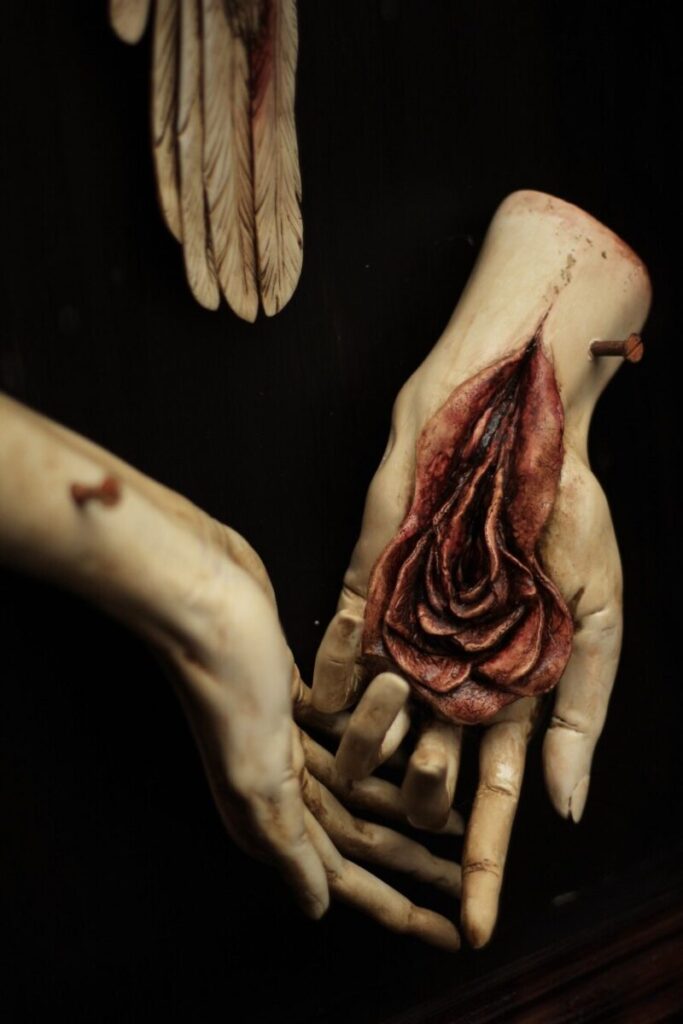
During his time there, Emil built up a considerable wealth of knowledge regarding art from various mediums and techniques and was able to begin his search to find his own style. At first, the sculptor described his work as kitschy, and he focused a lot on dark humour. “I believe we all have a knack for something, and in my case, I found modelling easy”. Emil believes he has a stronger connection with his audience through sculpture by creating something palpable.
“Sculpture acquires a certain breath of life because of its existence in the third dimension. The viewer can open up a dialogue with this creation whose soul lives elsewhere”. To explain further, the sculptures are part of a macabre parallel universe full of symbolism where they exist as mute beings in need of salvation.
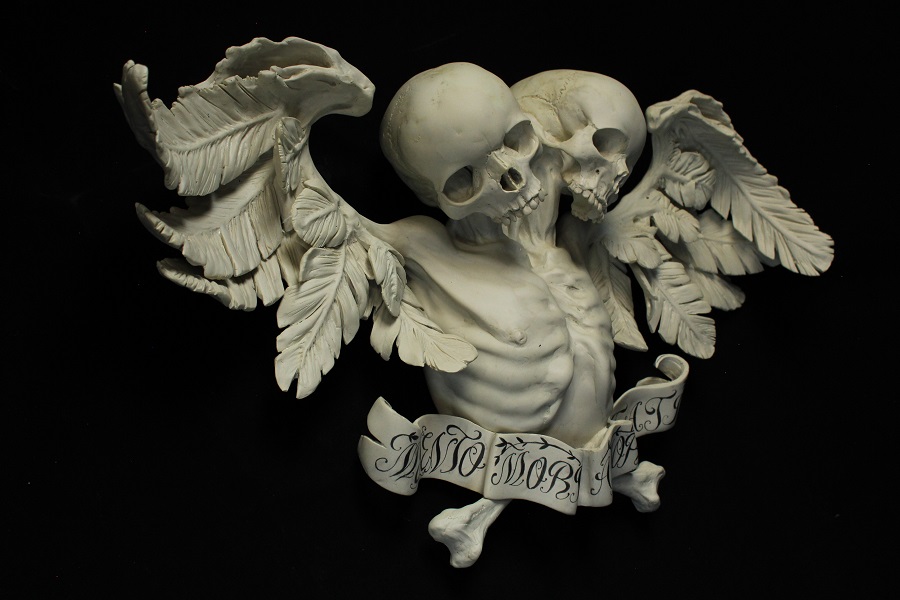
The religiosity of the creatures is based on pain and fear. After taking on their corporeal form in our plane, the clay creations lie dormant in their creator’s home, soaking up the energy around them, including that of their creator. As a final act of both consecration and baptism, their creator lights incense so that the cleansing smoke and aroma permeates the porous earthy skin. This ritual would never have been possible if it wasn’t for Emil’s wife Fernanda, who helped him find his own spirituality.
This extravagant dance between worlds is not something the Mexican artist can create with ease. Even his starting process varies depending on how he is feeling. While he doesn’t always begin with a sketch, he prefers to jump into his medium and make adjustments along the way. “I love that uncertainty; it’s as if I were going to meet a person with whom I have only spoken to”.

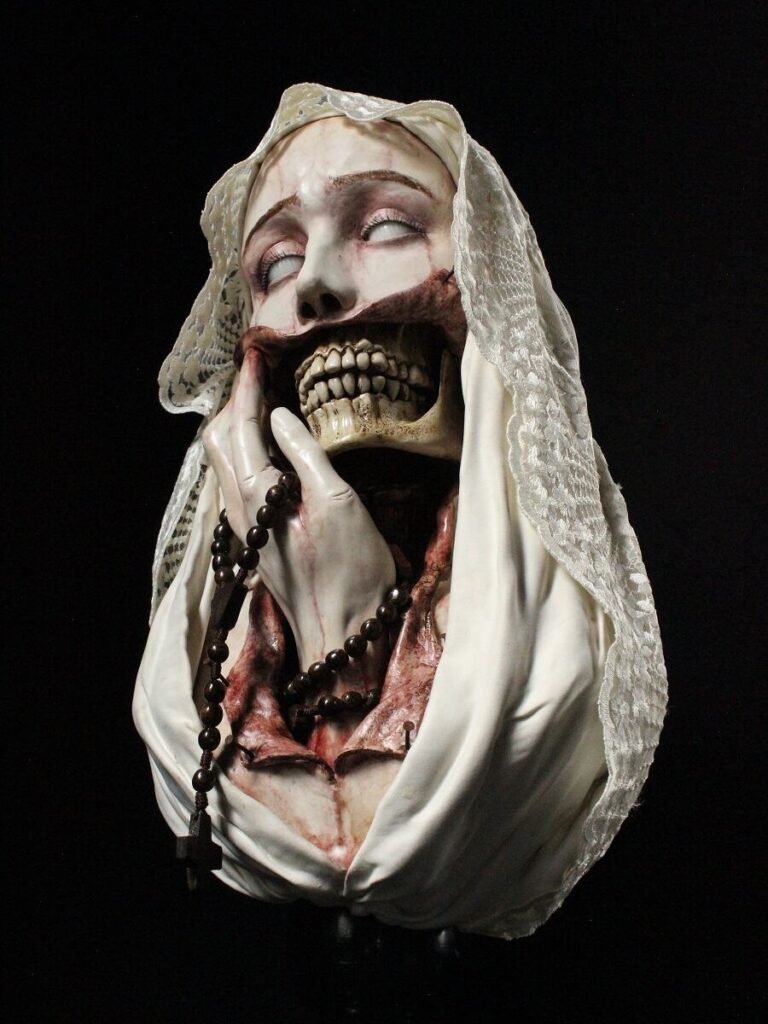
With that sort of mindset, each piece has both a unique story and birth into the world.
Curiously, a large sculpture requires more material but allows quick work because of the space the creation takes up. Contrasting this, a small sculpture can take more time as there is less space to work with.
However, Emil recognises the fact that less materials are used on smaller sculptures which can sometimes reduce the modelling time though he usually prefers to work big. He also sometimes works on several sculptures at a time. Some artworks can take several months to complete, whereas others just a few weeks. The chaos of it all is reflected in his workspace where a long table full of unfinished monstrosities lie in wait.
They are accompanied by a variety of antiques and picture frames that help enrich some of his creations. The walls of his space are adorned by the tools of his trade including blackboards and sketches of human proportions, which would make a mad scientist feel right at home. To add to the horror, Emil’s home is full of movies and literature dedicated to the genre. Ghastly artwork adorns his walls and at times the home is filled with spooky and gloomy music. For some artists, their work is merely a facet or an extension. For Emil, it is the blood that gushes through his veins.

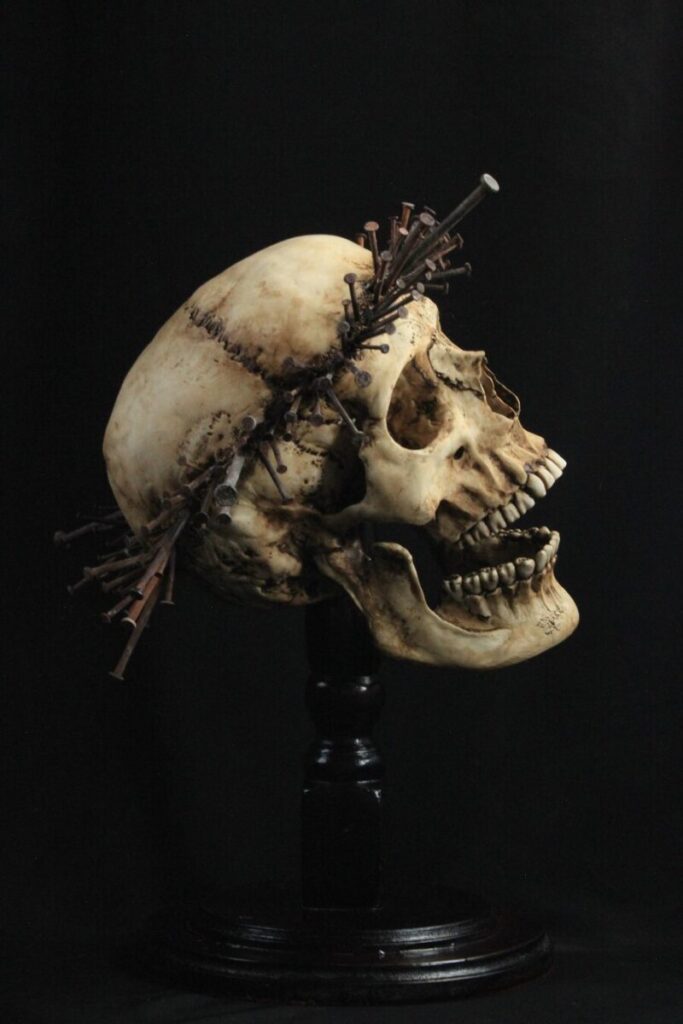
Emil’s sculptures are part of a macabre parallel universe full of symbolism where
Addison Devereux
they exist as mute beings in need of salvation. The religiosity of the creatures is based
on pain and fear.
Though nearly all of Emil’s sculptures reflect a certain amount of pain, he explains the theme as an appreciation for life through the eternal words of memento mori. “I believe that if we are truly aware that death can come at any moment, it can help us to make the most of every moment and push us to enrich our experience in this life”, he adds. Pain appears to be another sort of transformative energy that can also provide enlightenment and ascension.
This philosophical train of thought becomes clearer when viewed under the lens of penance, grief, and sorrow. This ties in as well to the religious iconography ever-present in Emil’s work. Religion contains dissonant elements that can make its followers uneasy, which is usually intended to push them towards the divine and stay on the righteous path. “Sacred art is a perfect mix between terror, the macabre, and the beauty of the divine”.
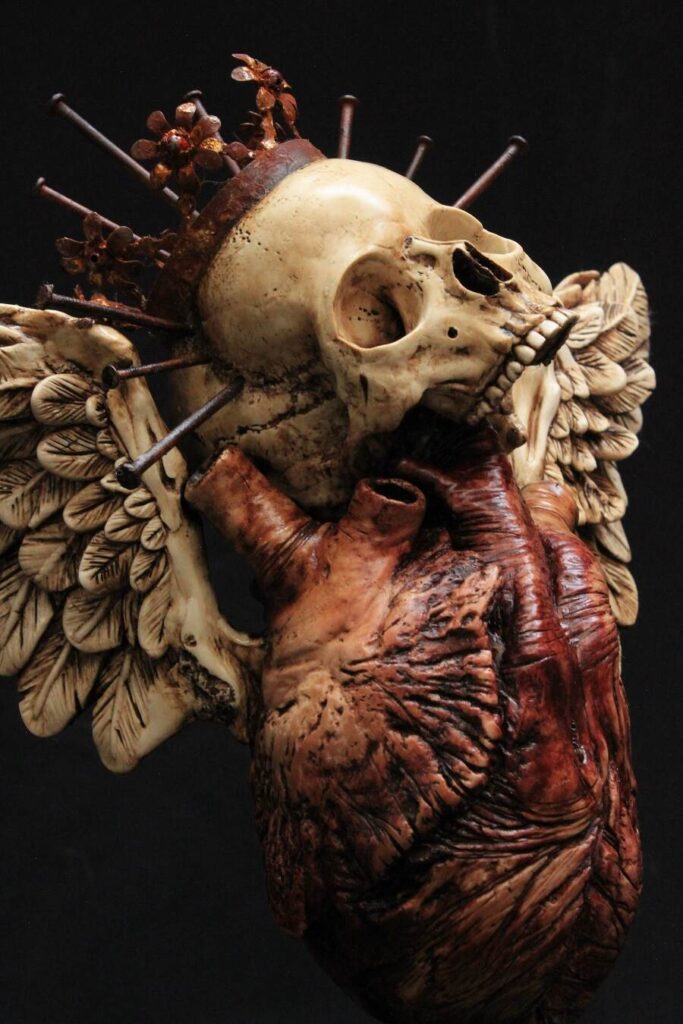

This sacred art can be traced to Emil’s influences which span across the ages from French baroque art, Renaissance sculpture, the medical studies of Specola di Firenze, and Victorian death rituals but also include sacred art and the vast intricacies of Catholicism. Artists like Santiago Caruso, Takato Yamamoto, and Forest Rogers are among the clay sculptor’s favourite artists, which understandably share similarities to his own work.
Additionally, his pieces incorporate the immortal dichotomy of life and death in their gruesome and often horrifying depictions. Other dualities are represented as well: light and dark, good and evil, creation and destruction. In these pairs, beauty is often found and has been the subject of countless discussions and portrayals. While Emil’s sculptures may depict disturbing imagery, the work often exists in the delicate balance of two opposing sides.
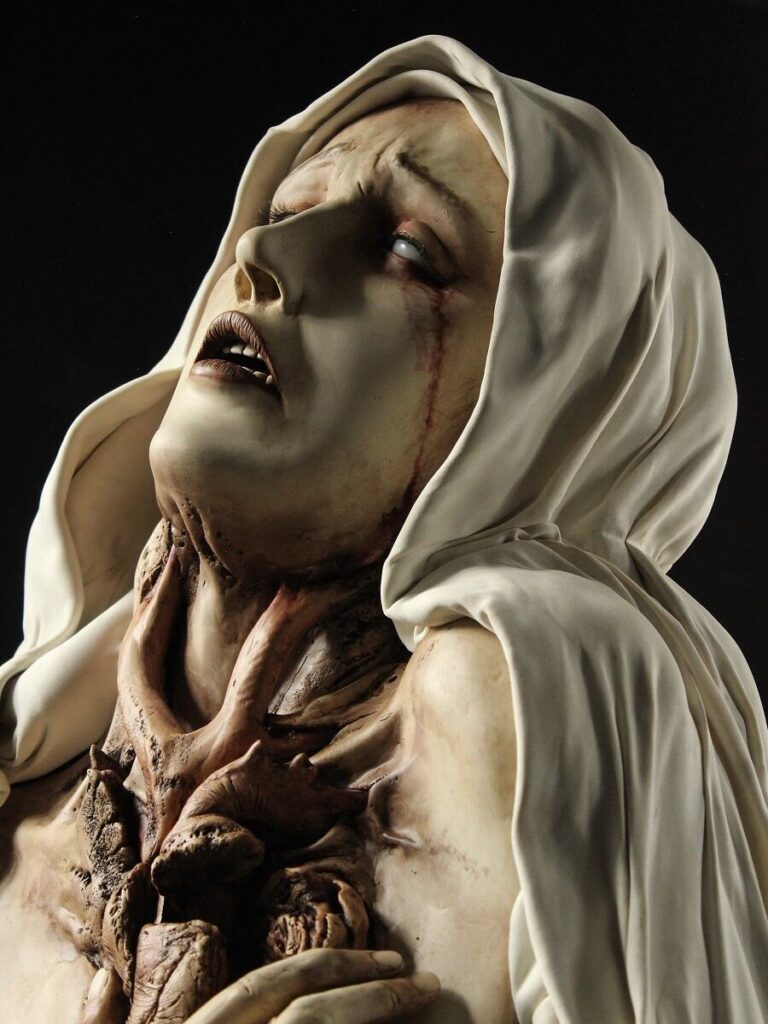
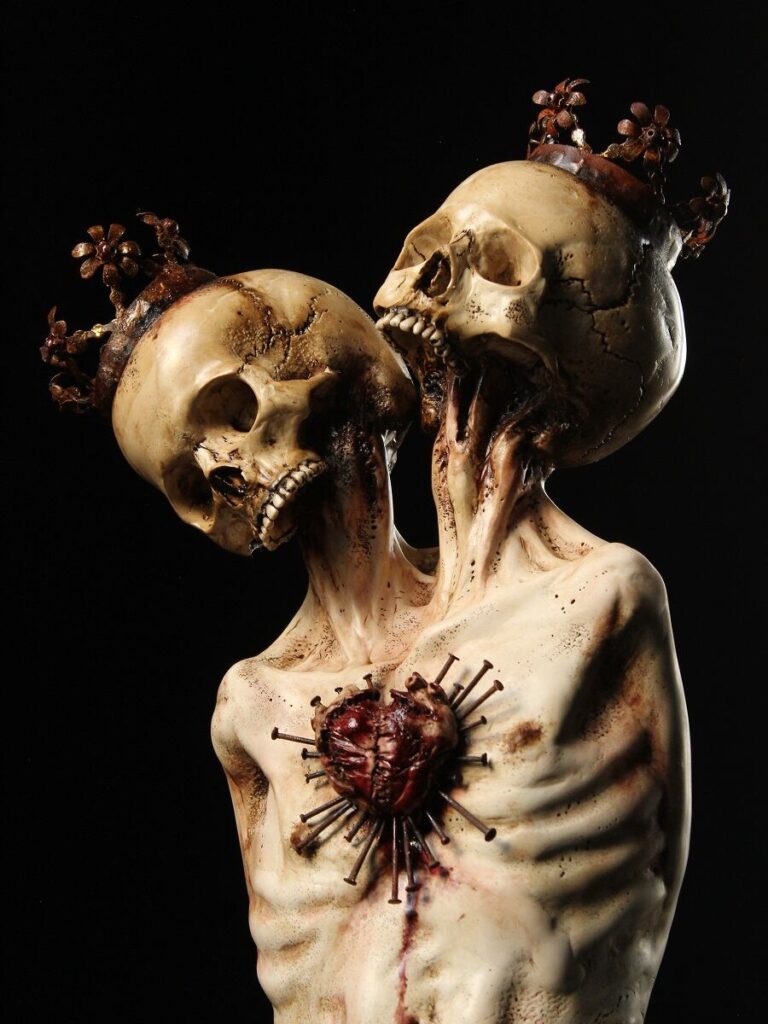
While the reader of this magazine may not be able to enjoy the depth and dimension of these macabre sculptures in person, Emil assures us he takes great care to capture the thousands of faces in a two-dimensional environment. The elements of his sculpture are vital to the message conveyed and because of this, the pictures taken are done from perspectives with plenty of drama. Because of his success with both the second dimension as well as the third, the cadaverous figures have become influential for other artists and create a bit of a legacy for Emil. “It is a compliment and an honour that other artists are inspired by my work to create their art” he states proudly.”
One of his greatest fears is being left behind in the art world. With galleries redefining their version of contemporary art as well as putting a higher value on new technologies and digital art, Emil is worried his style will be viewed as archaic. He appreciates the many years he has spent carving his name into the art world and feels that he will never give up or modify his style to fit in. However, he does want to expand on his influence into video games and multimedia. With his fame growing, he has found a few situations where he has been recognised in public and sees people getting tattoos of his work.
His creations have been used for several album covers for musicians, been featured in films and music videos, and even been written about as a muse. One experience he cherishes deeply was seeing a painting of his work. He went to purchase the painting from the artist who must have been incredulous. When asked about his favourite piece, the sculptor gave a direct answer. Arcane XIII (Transfiguration) is a surrealist self-portrait.
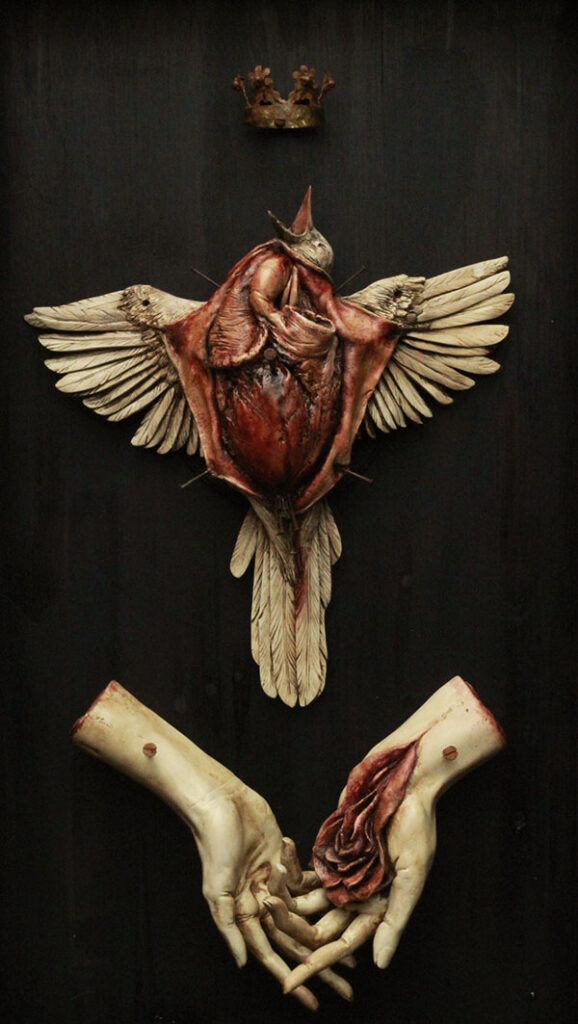

The bust of a man who has undergone an autopsy, along his thorax, head, and neck is depicted. His brain is in the middle of a metamorphosis and merging with the skull positioned on the opposite side of the face. The skull is a timeless symbol of death and incidentally, the XIII symbolises death, the
thirteenth card in the major arcana of a tarot deck.
The figure has a tongue-like structure which turns into the sternocleidomastoid, which are the muscles that turn and nod the head. This transformed tongue rests on the heart and acts as a conduit connecting life, passion and shows the symbiotic relationship between head and heart. Emil’s final summary of these pieces explains both how his ideas encourage him to live with greater intensity and how the theme of death thrives in his unconscious and conscious thoughts. Emil reiterates he doesn’t want to change his style, but he is curious about playing in other media.
Considering his eye for capturing the astounding angles of his sculptures, photography and illustration are a no-brainer. He also suggests installation art could easily enrich the universe he constructs, and working with other materials such as bronze and resin would give his works a new life, or more aptly, death.


